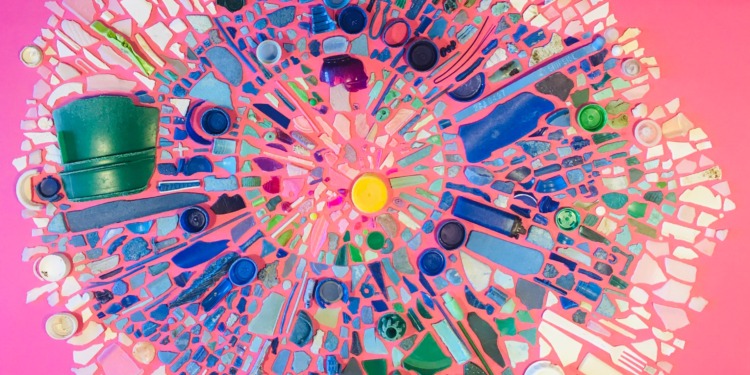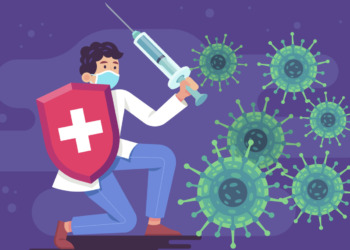Black carbon particles were first discovered in placentas and then in other foetal organs; now, microplastics have been found in breast milk. Whether and how pollutive particles of this kind affect prenatal and childhood development is still unclear, but one thing is certain – microplastics have become a fact of life.
Recent discoveries: Even our most intimate places cannot escape from pollution
A study published this month in the journal Lancet Planetary Health found that black carbon particles were present in every tissue sample taken from the lungs, livers, and brains of foetuses. The study was conducted jointly by professor Paul Fowler in Scotland and professor Tim Nawrot in Belgium, two countries with relatively low rates of air pollution.
Black carbon, or soot, is a toxic byproduct of burning fossil fuel and wood, among other types of fuels. This type of pollution is inhaled by the mother and passed along to the foetus through the bloodstream and placenta. The study demonstrated a direct correlation between the levels of air pollution where the mother resided and the concentration of black carbon particles in the foetal tissue.
Black carbon was first found in placentas in 2018, but this new study shows that these particles are also present in foetuses’ developing organs. Professor Fowler cited the possible interference of these carbon particles in a developing brain as the greatest cause for concern:
“What is even more worrying is that these particles also get into the developing human brain. This means that it is possible for these nanoparticles to directly interact with control systems within human foetal organs and cells.”
Air pollution is no longer the only concern for expecting mothers. Another recent paper, conducted by a team in Italy and published in the journal Polymers, reported that 75% of breast milk samples taken from 34 healthy mothers in Rome, Italy, contained microplastic particles. The study found no correlation between the mother’s habitual plastic use and the presence or concentration of plastic particles in their breast milk. According to the paper, this suggests that the “ubiquitous [microplastic] presence makes human exposure inevitable.”
These findings have reinforced a growing concern of which the world is becoming aware: the ubiquity of microplastics in our day-to-day lives. Over the past few years, scientists have discovered more and more corners of the earth that are no longer immune to the effects of plastic pollution.
Microplastics have now been found in snow samples on the summit of Everest and beneath ice floes in the arctic, in the deepest trenches of the ocean and the loneliest reaches of the desert.
Physiological effects: How harmful are these particles?
The harmful effects of air pollution on pregnancy outcomes have been studied in detail. High levels of air pollution increase the risk of preterm birth and low birth weight. A previous study has also demonstrated a link between in-utero exposure to air pollution and rates of childhood asthma. The impact of air pollution is comparable to the level of harm caused by smoking during pregnancy.
These increased risks have a cumulative effect that results in stark figures; a report by the State of Global Air in 2020 attributed nearly half a million infant deaths across the globe to the effects of air pollution.
Related articles: Microplastics Found in Human Blood | 4 Ways to Reduce Plastic Pollution
Science concerning the effect of microplastic particles on the health of humans is still emerging and, therefore, uncertain. However, studies so far have demonstrated that microplastics cause harm both to other small organisms, such as plankton and mice, and also to human cells.
Evidence suggests that particles smaller than microplastics, dubbed nanoplastics, are likely the greatest cause for concern. When below a certain size, these particles can enter cells and affect organic processes at a cellular level. Nanoplastics of this type are, unfortunately, also the most challenging to identify and study due to the limits of technologies that operate on that scale.
Although the physiological consequences of these particles on humans are unclear, the presence of microplastics in breastmilk is still cause for concern, suggesting that these pollutants, whose effects are largely unknown, seem to be unavoidable from our first days.
Mitigating the risks and finding solutions
An expectant mother could choose to travel on less busy roads or even move away from a big city, if concerned about the effects of air pollution. However, a report from the World Health Organisation says that 92% of the world’s population live with air pollution above recommended levels.
Additionally, much of the world has no way to escape from the effects of air pollution.
"Currently, around 1/3 of the
’s population relies on polluting fuels and cooking technologies. There are an estimated 3.2 million premature deaths each year as the result of household #AirPollution"-@DrTedros
Full remarks
https://t.co/2tC09bvn4E #COP27 pic.twitter.com/9KSFSSMl2H
— World Health Organization (WHO) (@WHO) October 7, 2022
UNICEF found that air pollution in 70% of cities and towns even in the UK is above WHO recommendations. To mark Clean Air Day this summer, Dr Eddie Morris, President of the Royal College of Obstetricians and Gynaecologists, called on the UK government to reframe the timeline they were considering for targets concerning air quality in England.
Citing the increased danger that air pollution poses to expectant mothers, and consequently the children of future generations, the RCOG asked that the proposed target be met by 2030 instead of 2040.
Compared to air pollution, microplastics are equally, if not more, challenging to avoid, especially since plastic plays a fundamental role in the food transportation and packaging industries.
A 2018 study showed over 90% of bottled water contains microplastic particles. #HonestSupermarket pic.twitter.com/qVDBhGBX6M
— BBC Two (@BBCTwo) July 8, 2019
It is likely that, even with the presence of microplastics, breast milk exposes infants to lower concentrations of small plastic particles than bottle feeding. Studies have shown that the high temperature at which plastic baby bottles are typically sterilised can cause microplastics to leach into the formula.
Although the mounting evidence for the ubiquity of microplastics — and its presence in human breast milk in particular — are cause for concern, there are some exciting new developments in the search for a solution to plastic pollution. The field of mycology has taken promising steps in two ways. One startup is replacing plastic packaging with a blend of mycelium and hemp, and species of mushrooms that are able to metabolise plastic waste continue to be discovered.
Whilst there is some work being done to combat the increasing concentration of pollutants in both our environments and ourselves, rates of plastic production are still rising. Plastic production is expected to double by 2040 and increase by 2.5 times by 2050. As long as this is the case, microplastics will continue to be discovered in increasingly unexpected places.
Editor’s Note: The opinions expressed here by the authors are their own, not those of Impakter.com — In the Featured Photo: New study finds that 75% of breast milk samples taken from 34 healthy mothers in Rome, Italy, contained microplastics. Featured Photo Credit: Dan Lewis.










